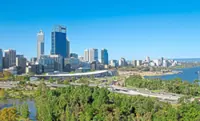Animal keeper Jessica Dick with a kangaroo at Wild Life Sydney Zoo, Australia. Photo: dpa
Dot energetically hops through the enclosure. It’s easy to see where the name comes from: A small dark spot on the fur beneath her right eye.
Part of a group of six females, the seven-year-old kangaroo leads a good life in Sydney’s Wild Life Zoo. The kangaroo is trusting, greedy and simply extremely cute, staring at the visitor with her large gentle eyes.
Already a subscriber? Log in
Save 30% OFF The Star Digital Access
Cancel anytime. Ad-free. Unlimited access with perks.





